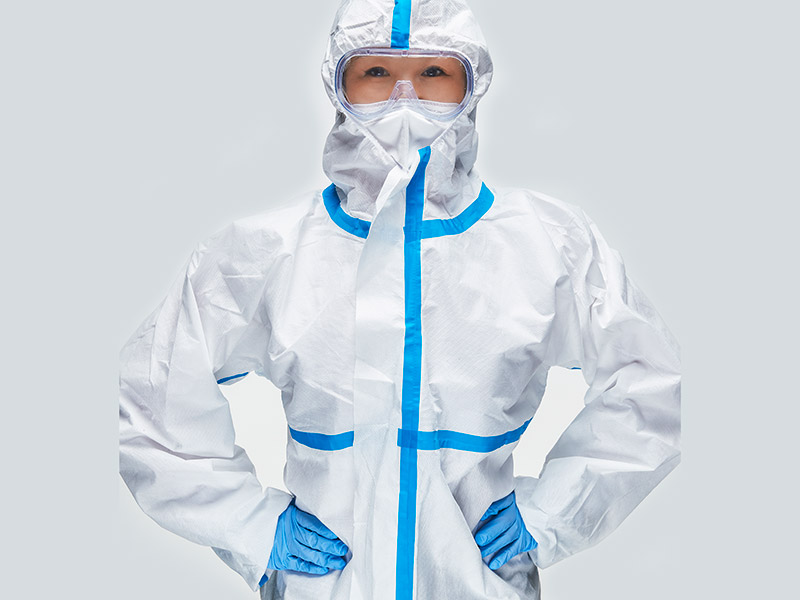Medical protective clothing includes all kinds of clothing specially worn in the medical environment, so there are many classification methods.
1. According to the purpose
According to the purpose and use occasions, it can be divided into: daily work clothes, surgical clothes, isolation clothing and protective clothing.
Daily work clothes refer to the white coats worn by medical staff in their daily work, also known as white coats.
Surgical gown refers to specially designed clothing worn in the operating room.
Isolation clothing refers to clothing worn by medical staff when they come in contact with patients, and when family members visit patients.
Protective clothing refers to the clothing worn by people who enter special areas such as medical emergency, infectious disease areas, electromagnetic radiation areas, etc.
2. According to the service life
According to the service life, medical protective clothing can be divided into disposable protective clothing and reusable protective clothing.
Disposable protective clothing is discarded after use, without disinfection or washing. It is easy to use and can avoid cross-infection. However, disposable materials degrade slowly and easily cause environmental pollution. Usually, surgical gowns and isolation gowns with high protection requirements are mostly used Types of. The reusable type needs to go through washing, high temperature disinfection and other measures after use. Generally, the comfort of the material is better, but the protection performance is usually poor. The washing and disinfection process will also increase a lot of manpower and water resources costs, and usually require little protection Most of the daily work clothes use this type.
3. According to materials
According to different processing techniques of materials, medical protective clothing is divided into woven and non-woven protective clothing.
Woven materials are mainly used to process reusable medical protective clothing, including traditional woven fabrics, high-density fabrics, coated fabrics and laminated fabrics. Traditional woven fabrics are mainly made of cotton fiber or polyester and other synthetic fibers and cotton blended yarns, which have good comfort and are mainly used for daily work clothes. High-density fabric is woven with high-count cotton yarn or other superfine synthetic fiber filaments. The yarn gap is very small. It has moisture permeability due to the capillary action of the fiber. It is treated with fluorocarbon, silicone and other water-repellent agents to have a certain degree of resistance. Liquid permeability, mainly used for surgical gown materials that require better waterproof effect. Coating and laminated fabrics are used to enhance the impermeability of materials and are used for protective clothing materials that are used in harsh environments. After the coating process, the surface of the coated fabric is sealed by the coating agent, which has anti-permeability. The hydrophilic group in the coating or the microporous structure formed by a special method can ensure the moisture permeability of the fabric. Laminated fabric is a combination of fabric and a special film (such as microporous film, polyurethane moisture-permeable membrane, etc.) through a lamination process, such as PTFE super waterproof and moisture-permeable composite fabric. Since the pore size of the fabric main membrane is much smaller than the diameter of water droplets, it can prevent the penetration of blood, body fluids, etc., and the porosity of the micropores is high. The pore size is larger than the diameter of water vapor molecules, and water vapor molecules can pass freely, so the moisture permeability is better.
Non-woven protective clothing materials are basically disposable. Spunbond nonwovens, spunlace nonwovens, SMS (spunbond-meltblown-spunbond) composite nonwovens, flash evaporation are used more Non-woven fabrics and spunbond laminated products, etc.
Generally, non-woven protective clothing has better protection than machine-made materials.












